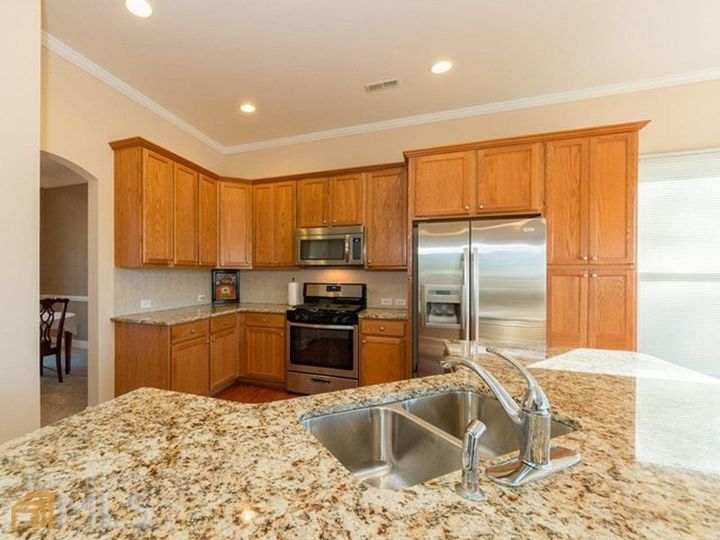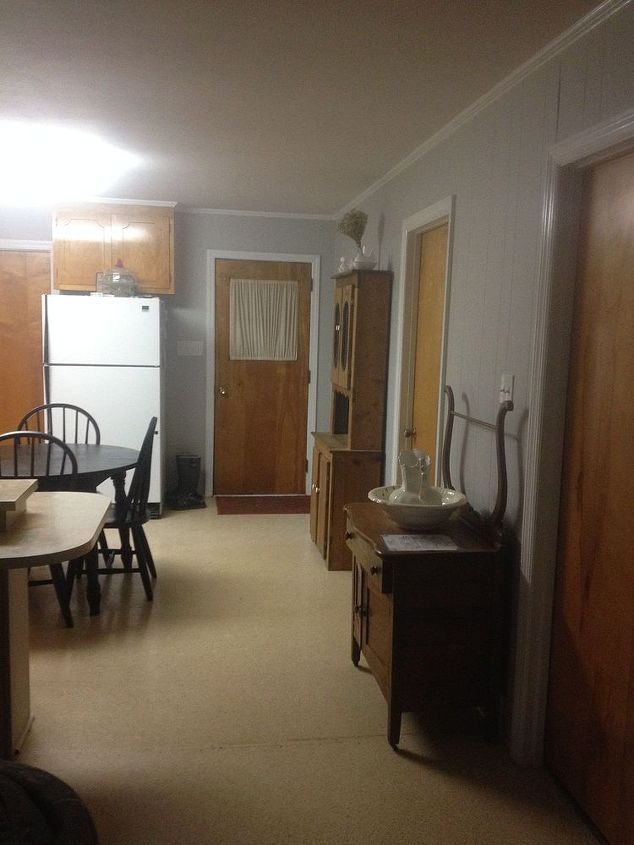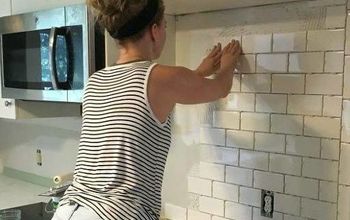Advice for changing a utility closet into a pantry?

I am changing a utility closet into a kitchen pantry. I would like to line the back wall with shelves. Where is the best place to buy selling? The closet is 8 ft long and 3 ft wide. Would be happy to receive any ideas.
Related Discussions
Vinyl plank flooring vs pergo (laminate)
I currently have stinky dirty carpeting in my living room and I want to replace it with a durable flooring that can stand up to dogs and kids.
How to remove popcorn ceiling that has been painted?
Does having a paint over a popcorn ceiling change how I'd remove the popcorn ceiling?
How to apply peel and stick wallpaper?
I want to spruce up my walls with peel-and-stick wallpaper. Has anyone used this before and can advise me as to how to apply it properly?
How to stain wood floor?
I've heard staining is a good technique for updating floors. So how do I stain my wood floor?
Should I re-stain or paint my cabinets?
Edit:””” 3 years later😂 I decided to paint them white and I am so very pleased with the results!We bought a new house with these ugly cabinets. I really cann... See more
Help me with my kitchen - strange layout with 3 doors in it!
I am looking for BUDGET options for my kitchen. It is very strangely laid out. I have 3 doors (laundry, bedroom and outside) that do not help the layout. I am planing... See more



Menards and other home improvement stores sell shelving and brackets to hold the shelving. There are numerous ways you can do it depending on the amount of money you want to spend. Perhaps rather than adding shelving to your walls you can buy the wire shelving units that fit into your space. They are reasonable in price, you can move them, and they hold quite a bit of weight. The problem I have had with shelving attached to the wall is that over time--with all the things I store on the shelves--the shelves will sag. I don't have that problem with the wire shelving units.
Any hardware or home improvement center will have various pre cut shelving or kits to choose from to fit any budget. My suggestion is for painted wood shelves. Paint with high gloss paint and any spills, drips and drops are easily wiped up. Here are some sites with shelving ideas for you.
https://www.diynetwork.com/how-to/rooms-and-spaces/kitchen/pantry-organization-made-easy-pictures
https://www.pinterest.com/diyboards/pantry-organization/
https://www.familyhandyman.com/kitchen/10-genius-ideas-for-building-a-pantry/view-all/
https://www.bobvila.com/articles/diy-kitchen-storage/
Don't be lured into buying wire shelves. These are simply a pain in a pantry as items do not slide well, get stuck in the empty spaces or fall through. Also, these shelves come in limited depths. You may very likely be shortchanging yourself on usuable space if the depth is too shallow.
Purchase solid wood shelves instead. Think about what kind of items you want to store in the pantry, and play around with rearranging the items first, deciding what is convenient for you. Vary the heights inbetween the shelves to fit your needs. For example, some cooks like to keep oatmeal with their other baking items. Some cooks like to keep it with the packaged cereals.
Measure the height of standard items, for example, the brand of crackers that you frequently buy, plus the height of your hand when reaching in to pick up the item. Make sure you have allowed enough space to grab the item and slide it without it getting stuck, or hitting your hand. The space inbetween two shelves must be this minimun height. Try to have the space inbetween two shelves only as high as one layer of the tallest item on this shelf. If you start piling one layer on top of another or two, then you will soon be putting stuff on the floor just to get at the other items underneath. This is not efficient use of space.
As your existing space is very narrow, mount the shelves wall to wall, along the full 8 ft length. Use the full floor to ceiling height, allowing a dedicated space on the bottom to tuck a step stool under. Make the shelves as deep as you can, while still permitting walking access. My guess is that the shelves will likely be one or two rows (for example one can in front of another can) deep in order to still allow knee space when bending down to retrieve items on the lower shelf. Pantry shelves are meant to be shallow, as it permits you to easily see at a glance what you have in stock.
Do you have one conventional door on the closet? If you have bifold doors, remove them, and install sliding doors, that when open, are on either side of the full panty opening. Bifold doors will cut into your usuable space and do not stay firmly open. As sliding doors mount on the outside, they will not interfer as much with access to pantry items inside.
Regarding Gk's comment about wooden shelves sagging:
This is usually because:
1/ shelving was insufficient thickness to hold the full weight of items on the shelf
2/ there were no vertical braces installed at midpoints between the shelf length
3/ mounting brackets or hardware was not sturdy enough to support the shelf.
4/ mounting hardware was not installed adequately into the wall studs